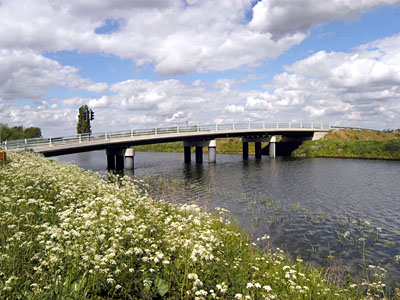The Road Bridge
Modney Bridge Road (formerly Budds Drove)
The need for a road bridge
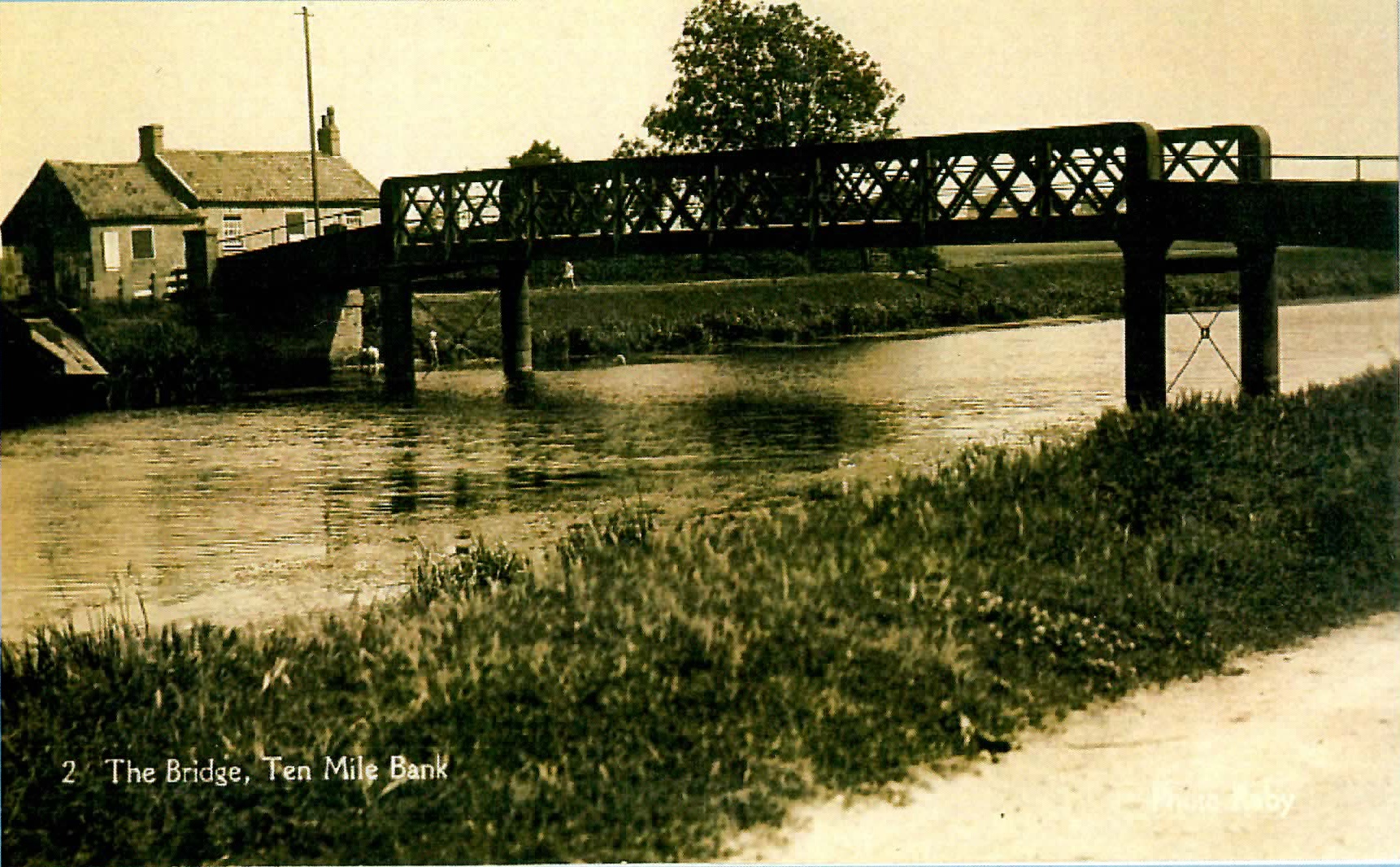
For many years before the construction of the original Iron bridge the only way of crossing the river Ouse at this point was by means of a "floating bridge" or ferry. This means of carrying vehicles, animals and people across was precarious at best. The danger was greater when the river was swollen, which happened often.
By 1880 the ferry was desperately showings signs of being at the end of its life. It was deemed absolutely necessary to replace it with another similar device or to build a bridge.
In those days there was great demand for anything that would speed up the transport of goods or passengers in any way. So replacing the ferry could not seriously be considered. And anyway doing so would almost certainly deprive the area of a bridge for many years to come.
A number of gentlemen, the foremost being Major Stocks of Hilgay formed a committee which ultimately led to the formation of the limited liability company known as the "Hilgay Bridge Company". They invited the public to buy shares to raise the capital required for the work. The sum asked for was £2200 in £10 shares.
The public response was not as generous as expected and £600 of shares were still not taken up. Despite the shortfall, Major Stock was determined to press ahead, and the company was soon to enter into a contract with T. Shaw and co. of Cannon Street, London.
The total time to construct the bridge was less than three months, and it was officially opened on Wednesday 17th November 1880. This was not too soon because the old floating device had sunk to the bottom of the river bed just one week before. Almost as if in anticipation of its impending replacement.
Described as a lattice girder bridge of three spans, it was supported by cast iron cylinders of three feet in diameter. These were sank into the river bed by 10 feet 6 inches. The cylinders were filled with portland cement and concrete and were fixed to the river bed by means of a screw. The centre span was a lattice girder of 90 feet. Two more girders one of 30 feet and the other of 40 feet made up the spans on either side. The reason for the different lengths of the side spans was partially because of the bend in the river at this point, and also to allow barges extra depth on one side while passing underneath. The distance between the abutments which were made of white bricks was 160 feet.
The work was supervised by J Bloomfield on behalf of Shaw and Co, and no accidents occurred during its construction.
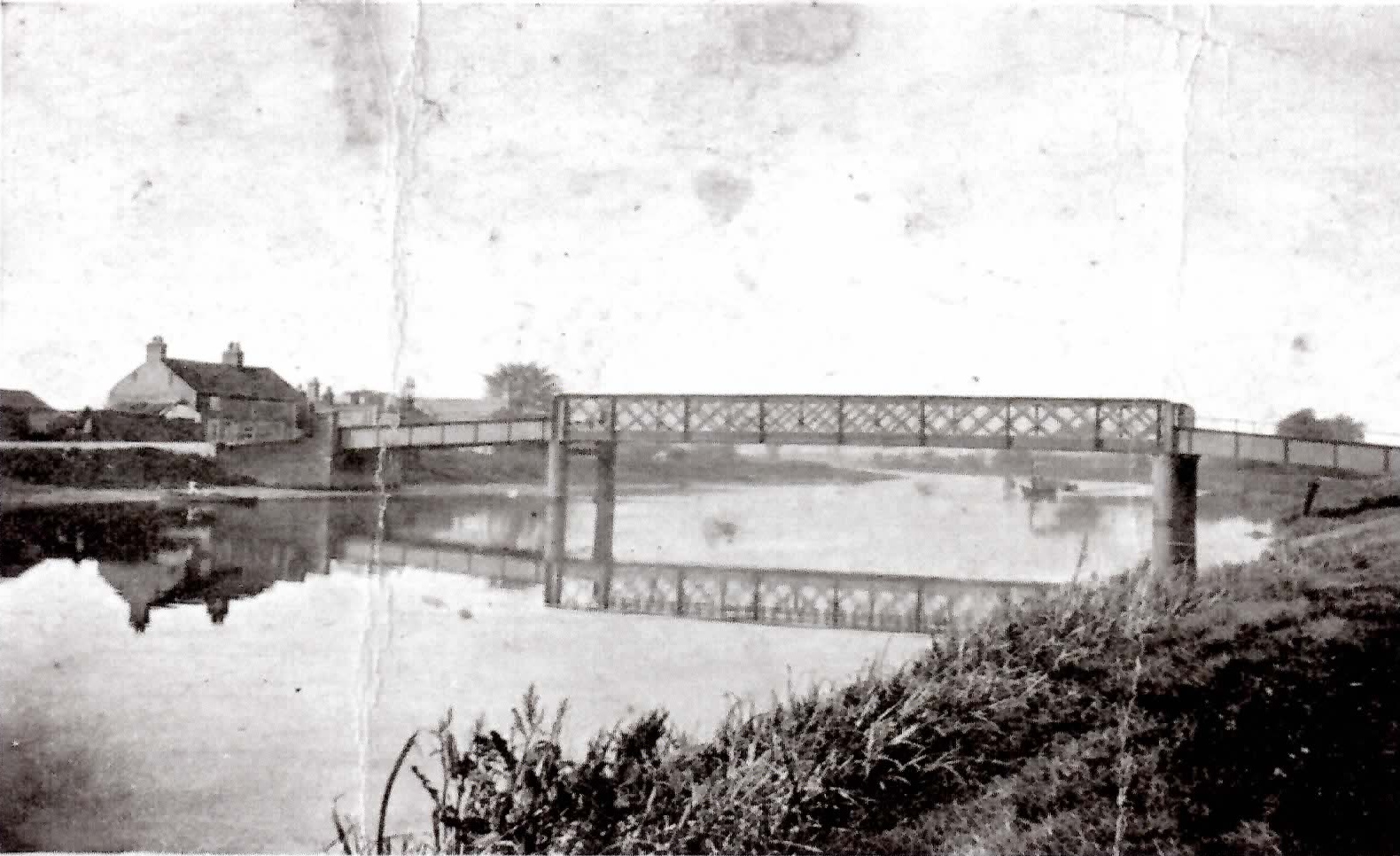
1880 - Opening Ceremony
It was a dry day and the local residents recognising the importance of the event assembled in large numbers. During the morning a couple of heavy traction engines were run over the bridge to test the quality of the work. It was stated later that the deflection of the main girder was only 1/8th of an inch.
At 12 o clock a procession started from Hilgay two miles away. Those who formed part of the procession and later met at the luncheon were; Major and Mrs Stocks, Canon Beechey, Mrs & Miss Beechey, Rev W. H. Stokes, Rev Mr Jackson, Mr J. Goodchild (Downham), Mr & Mrs E. S. Copeman, Mr & Mrs Shackle (Downham), Captain Taylor (Southery), Mr J. M. Bird (Downham), Mr H. Oakes (Downham), Mrs Morley, Mrs Montgomery, Mr William Goodchild (Ten Mile Bank), Mr W Smith (Ten Mile Bank), S Goodchild (Ten Mile Bank), Mr J Scott, Mr B. Carver, Mr E. Bird, Mr Wm Bennett, Mr W. Lallam, Mr S. G. Trotter and Mr A. Lion (Downham).
When the carriage of Major Stocks which was leading the procession, reached the centre of the bridge, Major Stocks rose and gave a speech. In which he stated that it had often been contemplated to build a bridge and that he was happy at last to have the honour of opening it. He was sure that it had always been wanted and that it would be a great benefit to the neighbourhood. He only hoped that the county would now take over the bridge so that it could become free. Finally he delcared that the bridge was open.
Subsequently a load of corn passed over the bridge followed by a boat drawn on a trolly. With the opening ceremony completed the company adjourned to the school-room.
The room was nicely decorated and the catering was supplied by Mr Porter of the Jolly Anglers. After Toasts and congratulations by Major Stocks, Mr Ommanney, the consulting engineer stated that the bridge has been inspected with great care. The foundations were built on blue gault and that the bridge had been built entirely to specification. Captain Taylor then proposed "The health of the Chairman and the directors of the bridge." He said the bridge would bring Southery to within 3 1/2 miles of the station, instead of having to travel nearly seven, which on a dark night was one of the most horrible drives he knew anywhere in the Fen. Stating that the work had been done in a most substantial mannor, he then called upon the company to drink to the health of those gentlemen to whom they were greatly indebted for this public improvement. Cannon Beechey also gave a speech, speaking of previous attempts at organising the construction of a bridge. Also that instructions had been issued that school children and all ministers engaged in Sunday work could pass for free. This was followed by a speech by Mr Bloomfield.
Goods such as locally grown corn had up till this point been forwarded to the railway via Downham. Now it could be forwarded or received a Hilgay Fen Station. Reducing the transportation distance by three miles.
1929 - Toll Removed
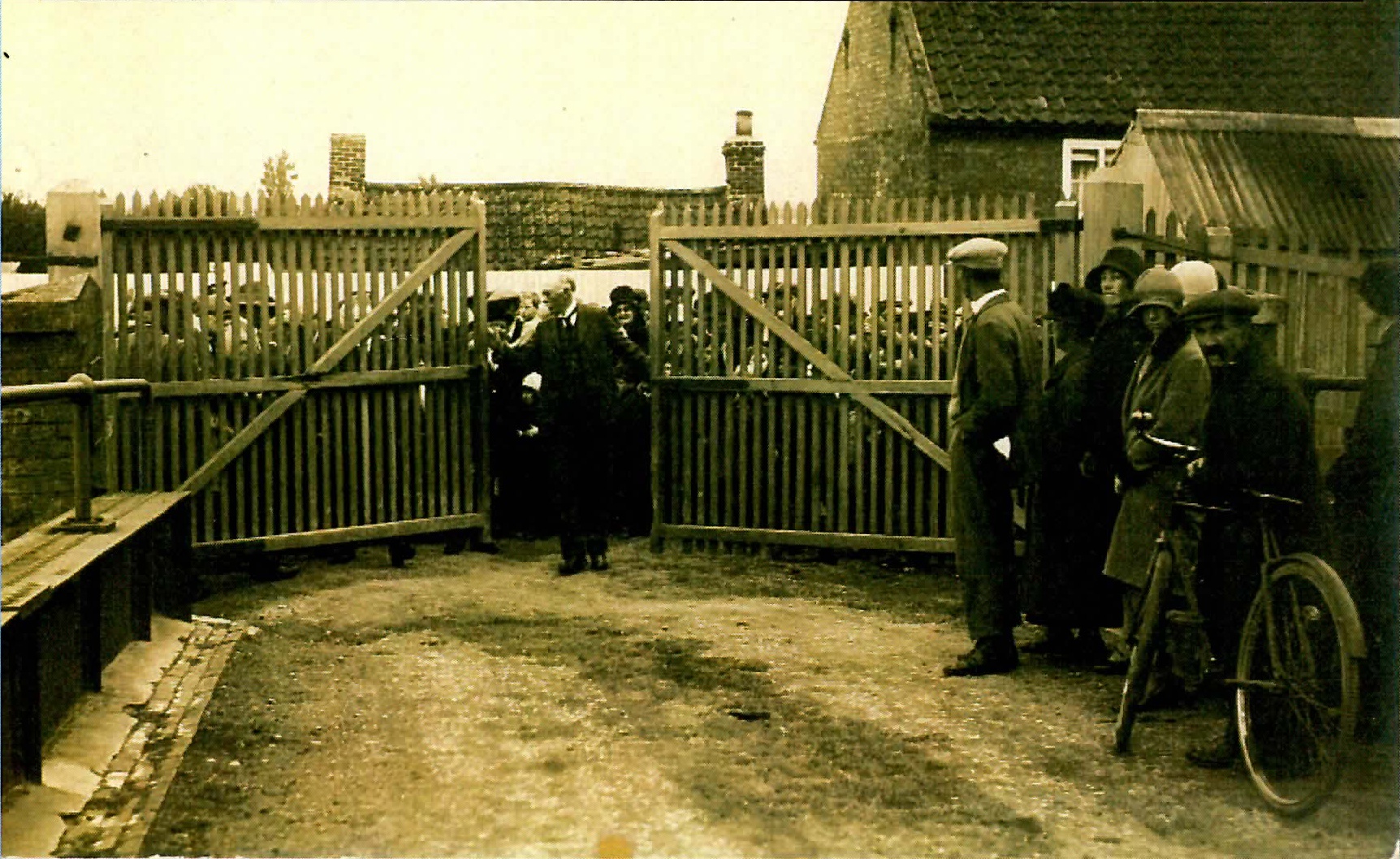
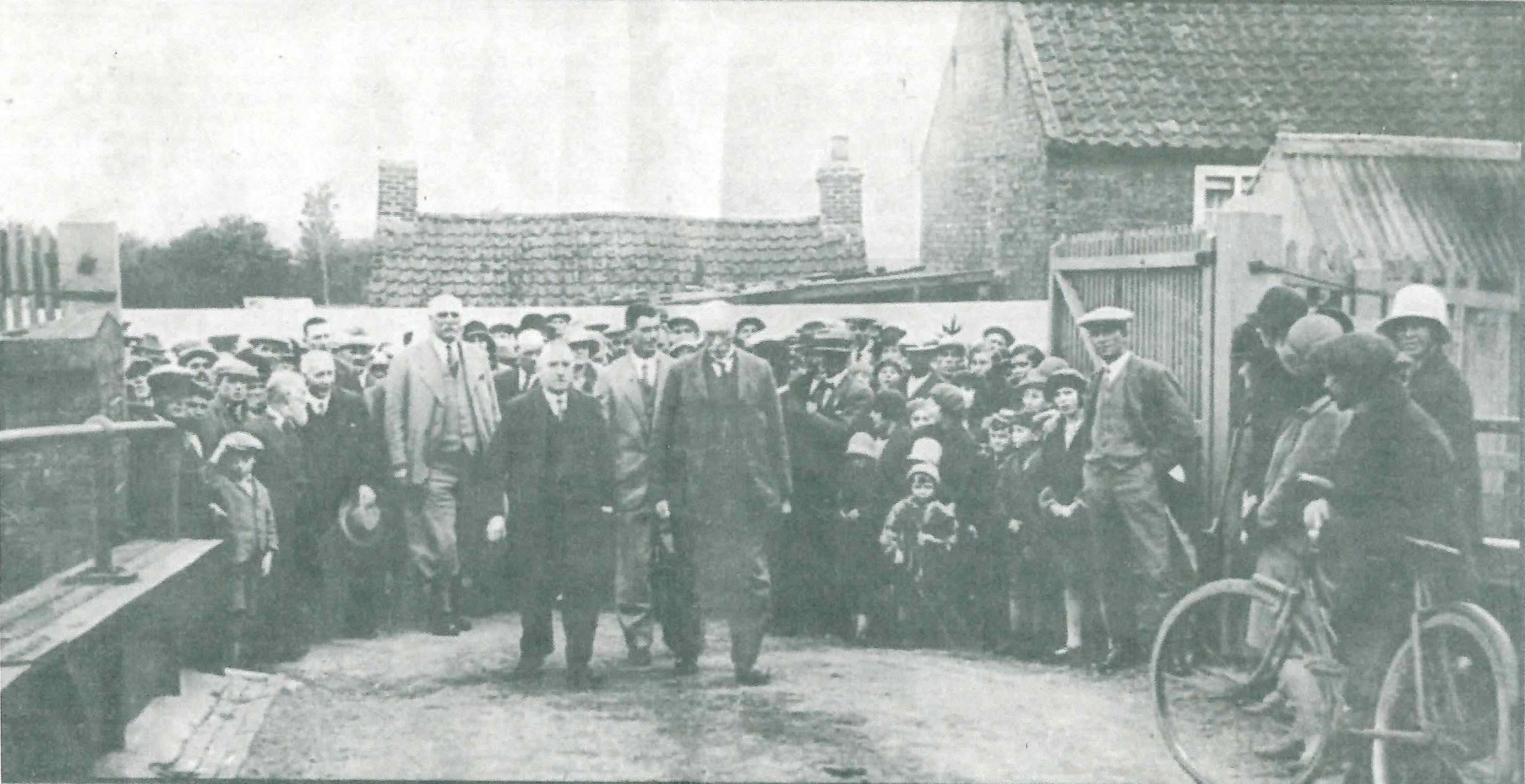
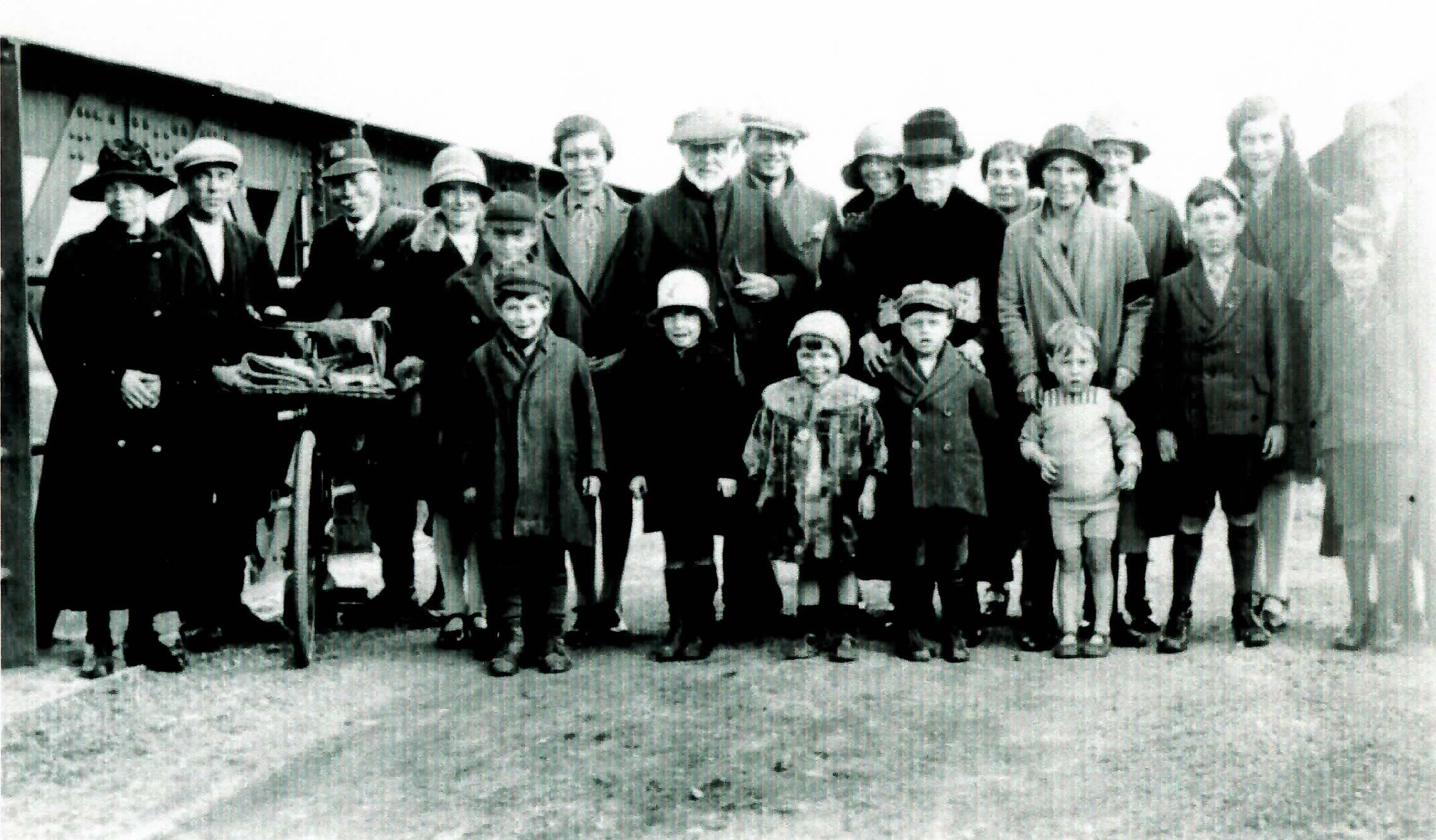
Winding up of the Hilgay Bridge Company
On the 29th July 1929, an extraordinary meeting was held by the members of the Hilgay bridge company, where it was announced that the company would be wound up voluntarily. William John Hyner was appointed as liquidator.
Directors of the Hilgay bridge company were;
- Major Stocks (chairman)
- Canon Beechey (vice chairman)
- William Henry Rose
- J. Goodchild
- W.Smith
- J. Leflay
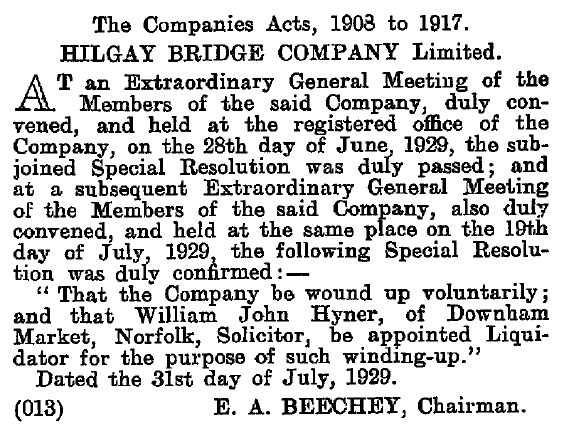 The London Gazette 6 August 1929
The London Gazette 6 August 1929
Weight Limit Restriction
In 1934 a weight limit of 5tons was imposed upon the bridge. This was subsequently removed by the War Transport minister in December of 1942.
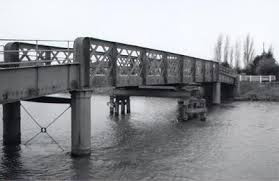
The original construction in 1880 did not include any support in the center of the bridge. It is unclear if the weight limit was lifted due to the central support being added to strengthen the bridge, or if it was an emergency measure during war time.
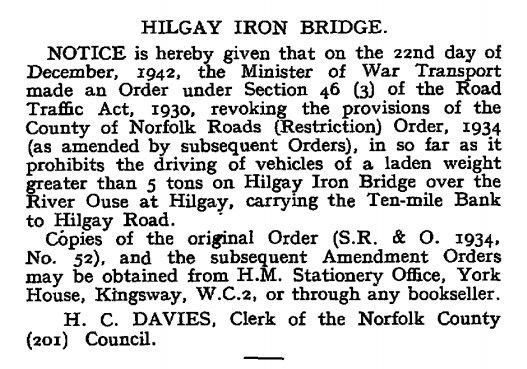 The London Gazette 15 January 1943
The London Gazette 15 January 1943
2004 - New Road Bridge
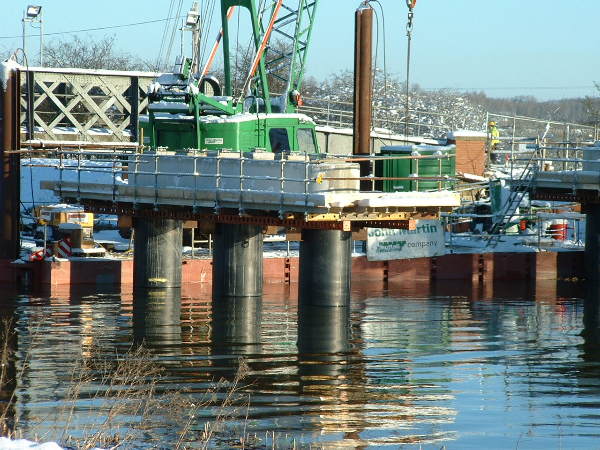
John Martin Construction Ltd, part of the HBG group, constructed a new bridge in 2004. The new bridge comprises of a 54m long deck supported on two end abutments and three intermediate river piers. The bridge deck was constructed as a concrete and steelwork composite structure carrying a 6m wide carriageway and 1.8m wide footway with mains services.
Once the steel structure was in place the concrete had to be spread evenly over the bridge, starting at the centre and working outward to each side. This was accomplished by utilising a 52m boom pump and a crane. C & G Concrete supplied concrete to each side of the river so that the pump was supplied at all times. The Putzmeister M52 pump was supplied by Camfaud Concrete Pumps Ltd.
Upon completion of the new bridge the old iron structure was dismantled and removed.
The new bridge is positioned just to the south of the old one. Bringing it directly in line with Station road. As this formed a crossroads as opposed to the old staggered junction, traffic lights were added to improve road safety.
